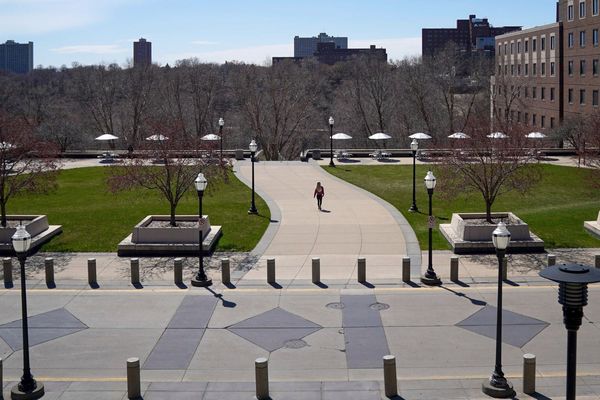
Authorities in Damascus have arrested three men they claim were involved in a notorious massacre of civilians by Syrian security forces revealed by the Guardian three years ago.
Footage posted online purported to show one of the men, Monzer al-Jazairi, with his hands bound and being led through the heavily damaged streets of Tadamon, the Damascus suburb where nearly 300 people were killed in an atrocity filmed by the perpetrators themselves and then leaked by a whistleblower to activists in Europe.
After his arrest on Monday, Jazairi said the final death toll was even higher. “About how many were killed?” he was asked by a uniformed man.
“About 500 people,” he replied.
A witness in the neighbourhood said that it was stormed by truckloads of security forces on Monday afternoon, who closed off the perimeter of several blocks to prevent anyone escaping.
The two others arrested – and pictured sitting in the back of a pickup truck guarded by masked men – were identified as Somer Mohammed al-Mahmoud and Imad Mohammed al-Mahmoud.
It is unclear what role the trio played in the events in Tadamon. Their names are understood not to have come up in earlier research into the mass killings, suggesting they were not major players.
Over the course of a civil war in which the Bashar al-Assad regime killed at least 300,000 civilians, by one estimate, the massacre at Tadamon has become one of the most infamous for the clarity and detail with which it was documented by regime forces.
More than two-dozen videos showed uniformed members of Syrian military intelligence working with pro-Assad militiamen to kill an estimated 288 people, including 12 children. Their bodies were burned and buried using a bulldozer. The footage was dated to April 2013, a period in which the Syrian government and rebels were fighting over neighbourhoods on the outskirts of the capital.
A technician in Damascus discovered the footage on a Syrian government laptop and secretly sent it to activists in Paris, who passed the videos to a pair of researchers in the Netherlands, Annsar Shahhoud and Prof Uğur Ümit Üngör, from the University of Amsterdam and the NIOD Institute for War, Holocaust and Genocide Studies.
The face of the massacre became a Syrian military intelligence official named Amjad Yousef, who is still at large.
One of the videos showed Yousef, in military fatigues and a green fisherman’s hat with a distinctive scar on his eyebrow, leading 11 blindfolded men one-by-one to a pit, taunting several as he shoved them into the hole and murdered them.
Üngör and Shahhoud found a Facebook profile belonging to a man who resembled Yousef. The researchers befriended him and, posing as regime supporters, persuaded him to take part in several video calls that they filmed, excerpts from which were later published by the Guardian.
After one of the videos was published online, several of the families of the victims came forward saying they had identified their missing loved ones in the footage. The horror it sparked in Syria and among its diaspora led to rare concessions from the Assad regime, including the release of hundreds of prisoners and the appointment of a new defence minister.
But Yousef remained free, and two years ago was reportedly working on a military base outside Damascus. A former colleague said that year that Yousef had terrorised the Tadamon neighbourhood for the past decade, regularly snatching women from the streets, many of whom never returned.
“I saw him take women from a bread queue one morning,” the colleague said. “They were innocent. They had done nothing. They were either raped or killed. Nothing less.”
The US government announced it had imposed sanctions on Yousef and his family in 2023.
Syrian authorities announced in the days after Assad’s fall that they had arrested Yousef’s superior, Salih al-Ras.
“We used to bring detainees arrested at checkpoints, put them under the buildings here and execute them, and then after we’re done explode the buildings over them,” Jazairi told the Associated Press in a separate interview. It was unclear whether he was speaking under duress or voluntarily.
“Every batch constituted around 25 [people],” he said, adding that “around one week” passed between one batch and the next. The Damascus Security Chief, Lt. Col. Abdul Rahman al-Dabbagh, corroborated the number, citing additional confessions from those arrested.
“Many of those killed used to be collected at checkpoints and security [detention] centres, brought to Tadamon neighbourhood, where they were executed,” Dabbagh said. “The operation is ongoing to apprehend all those involved in violations and massacres against Syrians.”
Syria’s new transitional government, led by the former leader of the Islamist militia Hayat Tahrir al-Sham, Ahmed al-Sharaa, has been conducting raids in different cities to arrest remnants of the previous regime and says it is working on a judicial mechanism to hold them to account.







